Gardener Whetstone: Your Essential Tool for Sharp and Effective Gardening
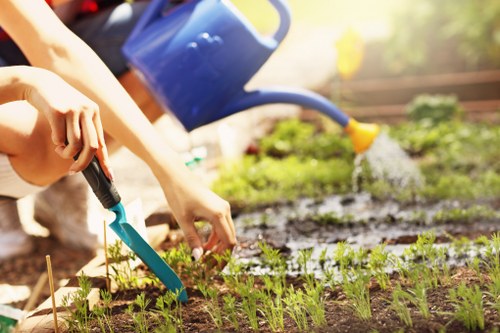
Every gardener knows that the quality of their tools directly impacts the health of their plants and the ease of their gardening tasks. One such essential tool is the gardener whetstone, a stone used to sharpen various gardening implements. Whether you're maintaining your trusty garden shears or ensuring your knives are razor-sharp, a whetstone is indispensable for any gardening enthusiast.
Using a Gardener Whetstone not only extends the life of your tools but also enhances their performance. Sharp tools make cutting easier and more precise, reducing the effort required and minimizing the risk of accidents. Moreover, regularly sharpening your tools ensures that they remain in top condition, allowing you to tackle any gardening task with confidence.
In this article, we will explore the various aspects of gardener whetstones, including their types, benefits, and how to use them effectively. Whether you're a seasoned gardener or just starting out, understanding how to maintain your tools with a whetstone can significantly improve your gardening experience.
### Understanding the Gardener Whetstone
A whetstone is a flat stone used to sharpen cutting tools by honing the edge to a fine sharpness. Gardener whetstones are specifically designed for gardening tools such as pruners, shears, knives, and hoes. They come in various grits, allowing gardeners to achieve different levels of sharpness depending on their needs.
There are primarily two types of whetstones: oil stones and water stones. Oil stones require the use of oil to lubricate the stone during sharpening, preventing metal filings from clogging the pores of the stone. On the other hand, water stones are soaked in water before use, providing a smoother sharpening surface and faster cutting action. For gardening purposes, water stones are often preferred due to their ease of maintenance and superior sharpening performance.
When selecting a gardener whetstone, it's essential to consider the type of tools you frequently use and the desired sharpness. A combination stone with both coarse and fine grits can be particularly useful, allowing you to perform both heavy-duty sharpening and fine honing with a single tool.

### Benefits of Using a Gardener Whetstone
Maintaining your gardening tools with a whetstone offers numerous benefits that go beyond mere sharpness. Here are some key advantages:
- Improved Efficiency: Sharper tools cut through plants and materials more easily, reducing the time and effort required for gardening tasks.
- Increased Precision: A sharp edge allows for more accurate cuts, which is particularly important for delicate tasks like pruning and shaping plants.
- Extended Tool Lifespan: Regular sharpening prevents tools from becoming damaged or worn out, ensuring they remain functional for longer periods.
- Cost-Effective: By maintaining your tools, you avoid the need for frequent replacements, saving you money in the long run.
Additionally, using a whetstone promotes safety. Dull tools require more force to use, increasing the risk of slips and accidents. Keeping your tools sharp ensures safer handling, making your gardening experience more enjoyable and less hazardous.
Furthermore, a well-maintained tool performs better and can handle tougher tasks without bending or breaking, giving you greater confidence in your gardening abilities.
### How to Use a Gardener Whetstone
Using a gardener whetstone may seem daunting at first, but with the right technique, anyone can achieve a sharp edge on their tools. Here's a step-by-step guide to help you get started:
- Choose the Right Grit: For dull or damaged edges, start with a coarse grit (around 200-400). For regular maintenance and honing, a fine grit (1000-3000) is sufficient.
- Prepare the Whetstone: If you're using a water stone, soak it in water for about 15 minutes before use. Oil stones require applying a light coat of honing oil.
- Secure the Stone: Place the whetstone on a stable, non-slip surface to prevent movement during sharpening.
- Sharpen the Tool: Hold the tool at the appropriate angle (usually around 20 degrees) and make consistent, even strokes along the stone. Maintain the angle throughout the process to ensure a uniform edge.
- Flip and Repeat: After several strokes on one side, flip the tool and repeat the process on the other side to ensure balanced sharpening.
- Switch Grits if Necessary: For a finer edge, switch to a higher grit whetstone and repeat the sharpening process.
- Clean and Test: After sharpening, clean the tool to remove any residue and test the sharpness by carefully slicing through a piece of paper or similar material.
Remember to take your time and apply consistent pressure during sharpening. Practice makes perfect, and with regular use, you'll become more adept at maintaining your tools with a whetstone.
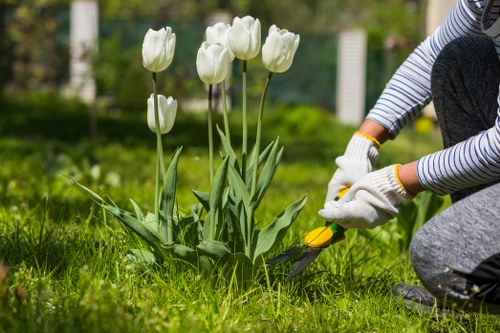
### Choosing the Right Gardener Whetstone
Selecting the appropriate whetstone is crucial for effective tool maintenance. Here are some factors to consider when choosing a gardener whetstone:
- Grit Size: As mentioned earlier, the grit size determines the level of sharpness. Coarse grits are suitable for repairing damaged edges, while fine grits are ideal for honing and polishing.
- Stone Material: Water stones and oil stones are the most common types. Water stones are preferred for their ease of use and superior sharpening capabilities, making them a popular choice among gardeners.
- Stone Size: The size of the whetstone should match the size of your tools. Larger stones offer more surface area for larger tools, while smaller stones are convenient for handheld tools.
- Dual-Compound Stones: Some whetstones offer dual compounds with different grits on each side, providing versatility in sharpening tasks without the need for multiple stones.
When selecting a whetstone, consider the types of tools you use most frequently and choose a stone that complements their maintenance requirements. Investing in a high-quality whetstone ensures better performance and durability, making it a worthwhile addition to your gardening toolkit.
Additionally, look for whetstones that are easy to clean and maintain. A good whetstone should retain its shape and grit over time, providing consistent sharpening results with minimal upkeep.
### Maintenance and Care for Your Whetstone
Proper maintenance of your gardener whetstone is essential to ensure its longevity and effectiveness. Here are some tips to keep your whetstone in top condition:
- Cleaning: After each use, clean the whetstone to remove any metal filings or residue. For water stones, rinse thoroughly with water and gently rub the surface to eliminate any debris. For oil stones, wipe the surface with a clean cloth to remove excess oil.
- Flattening: Over time, whetstones can develop uneven surfaces due to repeated use. Regularly flatten your stone using a lapping plate or a flattening stone to maintain a consistent sharpening surface.
- Storage: Store your whetstone in a dry, cool place to prevent moisture damage and maintain its structural integrity. Using a protective cover or case can help shield the stone from dust and other contaminants.
- Avoid Contamination: Keep your whetstone free from contaminants such as oils, greases, and chemicals that can affect its sharpening performance. Use separate stones for different types of tools if necessary.
By following these maintenance practices, you can ensure that your whetstone remains effective and reliable for years to come. Regular upkeep not only preserves the stone's functionality but also enhances the sharpening quality, providing you with consistently sharp and precise tools.
Additionally, always handle your whetstone with care to prevent chips or cracks. Using it on a stable surface and avoiding excessive force during sharpening will help maintain its shape and performance.
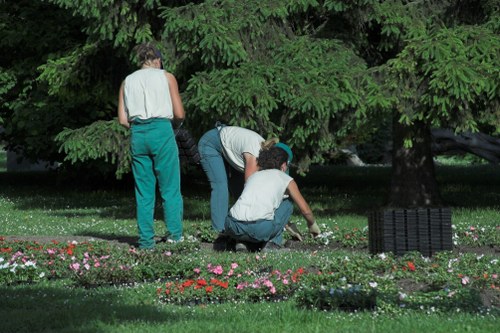
### Enhancing Your Gardening Experience with a Whetstone
Incorporating a gardener whetstone into your gardening routine can significantly enhance your overall gardening experience. Here’s how:
- Efficiency: Sharp tools streamline gardening tasks, from pruning to harvesting, making your work faster and less strenuous.
- Precision: Achieving clean cuts with sharp tools promotes healthier plant growth and reduces the risk of disease transmission between plants.
- Satisfaction: Maintaining your own tools provides a sense of accomplishment and connection to your gardening process, fostering a deeper appreciation for your hobby.
- Cost Savings: By extending the lifespan of your tools through regular sharpening, you save money by delaying or avoiding the need for replacements.
Furthermore, a sharp tool makes gardening more enjoyable by reducing frustration and physical strain. When your tools perform efficiently, you can focus more on the creative and rewarding aspects of gardening, such as designing your garden layout, nurturing plants, and enjoying the beauty of your outdoor space.
Moreover, sharp tools contribute to the overall aesthetics of your garden. Neatly trimmed plants and precise layouts enhance the visual appeal of your garden, making it a more inviting and relaxing environment.
### Common Tools to Sharpen with a Gardener Whetstone
There are several common gardening tools that benefit greatly from regular sharpening with a whetstone. Here are some of the most frequently sharpened tools:
- Pruners and Shears: Essential for trimming and shaping plants, maintaining sharp pruners and shears ensures clean cuts that promote healthy plant growth.
- Hoes: A sharp hoe allows for more efficient soil cultivation and weed removal, making it easier to maintain your garden beds.
- Knives: Gardening knives are versatile tools used for various tasks, including harvesting and cutting. Keeping them sharp enhances their functionality and safety.
- Axes and Hatchets: For larger-scale gardening tasks like chopping wood or breaking up tough soil, sharp axes and hatchets provide better performance and reduce fatigue.
- Garden Saws: Essential for cutting through thicker branches and woody stems, maintaining a sharp edge on your garden saw ensures precise and effortless cuts.
By regularly sharpening these tools, you ensure that each one performs at its best, contributing to the overall efficiency and success of your gardening efforts.
Additionally, sharp tools require less force to use, reducing the physical strain on your hands and wrists during prolonged gardening sessions. This makes your gardening activities more comfortable and sustainable over time.

### Safety Tips When Using a Whetstone
While using a gardener whetstone is relatively straightforward, it's essential to follow safety precautions to prevent accidents and ensure effective sharpening. Here are some important safety tips:
- Secure the Stone: Always place your whetstone on a stable, non-slip surface to prevent it from moving during use. This provides better control and reduces the risk of slips.
- Maintain Proper Posture: Position yourself in a comfortable stance with your tool and whetstone at a safe and accessible height to avoid awkward angles that could lead to accidents.
- Use Protective Gear: Wearing gloves can protect your hands from sharp edges and reduce the risk of cuts while sharpening.
- Focus on the Task: Pay close attention to the sharpening process, avoiding distractions that could lead to mistakes or injuries.
- Handle Tools Carefully: Always hold your tools securely and be mindful of the blade's direction to prevent accidental cuts.
Additionally, ensure that your workspace is well-lit to provide clear visibility during sharpening. Good lighting helps you maintain consistent angles and apply even pressure, resulting in a more effective sharpening process.
After sharpening, inspect your tools to ensure that the edges are smooth and free from any defects. Properly sharpened tools not only perform better but also contribute to a safer gardening experience.
### Environmental Considerations
Using a gardener whetstone is an environmentally friendly practice that promotes sustainability in your gardening routine. Here are some ways it contributes to a greener lifestyle:
- Reducing Waste: By sharpening and maintaining your existing tools, you extend their lifespan and reduce the need for frequent replacements, thereby minimizing waste.
- Lowering Resource Consumption: Maintaining your tools with a whetstone reduces the demand for new tool production, conserving natural resources and energy.
- Promoting Sustainable Gardening: Efficient and precise tools support sustainable gardening practices, such as organic gardening and minimal soil disturbance, which are beneficial for the environment.
- Eco-Friendly Materials: Many whetstones are made from natural materials that are biodegradable and environmentally friendly, adding to the overall sustainability of your gardening toolkit.
Moreover, by adopting proper tool maintenance practices, you contribute to a culture of sustainability and environmental stewardship within your gardening community.
Additionally, using natural sharpening stones reduces reliance on synthetic or disposable products, aligning your gardening practices with eco-friendly principles.
### Integrating a Whetstone into Your Gardening Routine
Incorporating a gardener whetstone into your regular gardening routine can enhance both the efficiency and enjoyment of your gardening activities. Here's how to seamlessly integrate tool sharpening into your schedule:
- Regular Maintenance: Set aside time each month to inspect and sharpen your tools as needed. Regular maintenance prevents tools from becoming too dull, making the sharpening process easier and quicker.
- Seasonal Sharpening: Sharpen your tools at the beginning and end of each gardening season. This ensures that your tools are in optimal condition for peak gardening periods and are properly maintained during the off-season.
- Create a Sharpening Station: Dedicate a specific area in your garage or shed for tool maintenance. Having a designated sharpening station makes it more convenient to access your whetstone and organize your tools.
- Educate Yourself: Learn proper sharpening techniques through tutorials or guidance from experienced gardeners. Understanding the correct methods ensures effective and safe sharpening.
- Combine with Other Maintenance Tasks: Pair tool sharpening with other maintenance activities, such as cleaning and oiling, to streamline your gardening workflow.
By making tool sharpening a regular part of your gardening routine, you maintain the quality and performance of your tools, leading to a more productive and satisfying gardening experience.
Additionally, organizing your tools and sharpening supplies in one place saves time and reduces the hassle of searching for items, further enhancing your gardening efficiency.
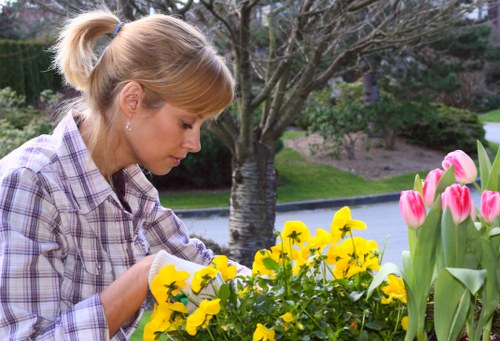
### Tips for Effective Tool Sharpening
Achieving the best results when using a gardener whetstone requires attention to detail and adherence to best practices. Here are some tips to enhance your sharpening technique:
- Consistent Angle: Maintaining a consistent sharpening angle is crucial for creating a uniform edge. Use a guide or practice to hold your tool at the correct angle throughout the process.
- Even Strokes: Apply even pressure and make smooth, consistent strokes to ensure an even sharpening across the entire blade.
- Alternate Sides: Regularly switch sides when sharpening to maintain balance and symmetry, preventing uneven wear on the blade.
- Monitor Progress: Periodically check the edge of your tool during sharpening to avoid over-sharpening and to ensure you achieve the desired sharpness.
- Patience: Sharpening tools takes time and practice. Be patient and take breaks if needed to maintain focus and precision.
Additionally, using a combination whetstone with multiple grits can streamline the sharpening process, allowing you to perform both coarse sharpening and fine honing without switching tools.
Moreover, investing in quality whetstones can provide better results and a more enjoyable sharpening experience, as they offer superior sharpening surfaces and longer durability.
### Common Mistakes to Avoid
Avoiding common mistakes when using a gardener whetstone can save you time and preserve the integrity of your tools. Here are some pitfalls to watch out for:
- Incorrect Angle: Sharpening at the wrong angle can lead to an uneven edge, reducing the tool's effectiveness and lifespan.
- Inconsistent Pressure: Applying uneven pressure causes irregular sharpening, resulting in a blade that doesn’t perform as intended.
- Skipping Grit Progression: Jumping from a coarse to a very fine grit without intermediate steps can overlook burr formation and reduce edge quality.
- Over-Sharpening: Excessive sharpening can wear down the blade, making it thinner and more prone to damage.
- Neglecting Maintenance: Failing to regularly clean and flatten your whetstone can lead to clogging and uneven sharpening surfaces.
Being mindful of these common errors and taking steps to avoid them ensures that your sharpening efforts are effective and your tools remain in excellent condition.
Additionally, educating yourself on proper sharpening techniques and practicing regularly can help you overcome these challenges, leading to better results and more confidence in your tool maintenance skills.

### Cost Considerations
Investing in a quality gardener whetstone can vary in cost depending on several factors. Here's what to consider when budgeting for a whetstone:
- Material Quality: Higher-quality stones made from durable materials tend to be more expensive but offer better sharpening performance and longevity.
- Grit Variety: Whetstones that offer multiple grits or are part of a set can provide more versatility but may come at a higher price.
- Brand Reputation: Established brands with positive reviews often charge more, reflecting their proven reliability and effectiveness.
- Size and Weight: Larger and heavier stones may cost more but provide a more stable sharpening surface and accommodate larger tools.
While it might be tempting to opt for cheaper options, investing in a higher-quality whetstone can save you money in the long run by ensuring better tool maintenance and reducing the need for frequent replacements.
Additionally, consider the long-term benefits of having well-maintained tools, which can enhance your gardening productivity and enjoyment, justifying the initial investment.
### Local Availability and Where to Buy
Finding a reliable source for your gardener whetstone is essential for ensuring you receive a quality product. Here are some common places to purchase whetstones:
- Local Garden Centers: Many garden centers stock tool maintenance supplies, including whetstones, making it convenient to purchase and seek advice from knowledgeable staff.
- Hardware Stores: Large hardware chains often carry a variety of whetstones, catering to different budgets and sharpening needs.
- Online Retailers: Websites like Amazon, Home Depot, and specialized tool shops offer a wide selection of whetstones, allowing you to compare features and prices easily.
- Specialty Tool Shops: Stores focused on gardening and tool maintenance provide expert advice and high-quality whetstones tailored to specific needs.
When purchasing a whetstone, consider reading reviews and seeking recommendations from fellow gardeners to ensure you're selecting a reliable and effective product. Additionally, checking return policies and warranties can provide added assurance of your purchase.
Moreover, visiting a physical store allows you to assess the whetstone's quality and suitability before buying, ensuring it meets your specific sharpening requirements.
### Conclusion
A gardener whetstone is an invaluable tool for maintaining the sharpness and performance of your gardening implements. By investing in a quality whetstone and incorporating regular sharpening into your gardening routine, you enhance the efficiency, safety, and longevity of your tools, ultimately improving your gardening experience.
Understanding the types of whetstones, mastering the sharpening technique, and adhering to proper maintenance practices will ensure that your tools remain in excellent condition, ready to tackle any gardening task with ease and precision.
Moreover, embracing sustainable practices by maintaining your tools with a whetstone contributes to a more environmentally friendly gardening approach, aligning your hobby with broader ecological values.
Whether you're a novice or an experienced gardener, a Gardener Whetstone is a worthwhile investment that pays dividends in the form of better tools and a more enjoyable gardening journey.
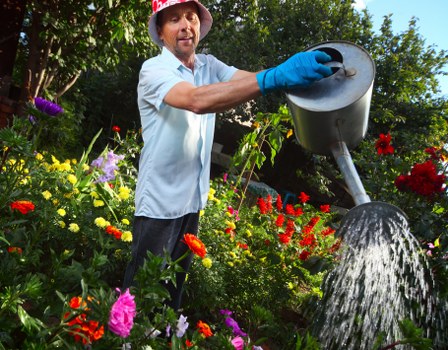
### Frequently Asked Questions
1. How often should I sharpen my gardening tools with a whetstone?
A: The frequency of sharpening depends on how often you use your tools. As a general guideline, inspect your tools monthly and sharpen them when you notice any dullness or difficulty in cutting. Regular maintenance ensures optimal performance and extends the tool's lifespan.
2. Can I use any whetstone for all my gardening tools?
A: While many whetstones can be used for a variety of tools, it's best to choose a stone with the appropriate grit and size for your specific tools. Some whetstones are designed for larger blades, while others are better suited for smaller, more delicate tools. Using the right stone ensures effective sharpening and prevents damage.
3. Is it better to use oil stones or water stones for gardening tools?
A: Both oil stones and water stones have their advantages. Water stones are generally preferred for gardening tools because they provide a smoother sharpening surface and are easier to clean. They also tend to sharpen faster and require less maintenance compared to oil stones.
4. How do I maintain my whetstone to ensure its longevity?
A: To maintain your whetstone, clean it thoroughly after each use to remove metal filings and debris. Regularly flatten the stone using a lapping plate or flattening stone to prevent uneven surfaces. Store the whetstone in a dry, cool place to avoid moisture damage and protect it from contaminants.
5. Can I sharpen other tools besides gardening tools with a whetstone?
A: Yes, a whetstone can be used to sharpen various household tools such as kitchen knives, scissors, and even some outdoor tools like pocket knives. However, make sure to use the appropriate grit and technique for each tool to achieve the best results and prevent damage.

